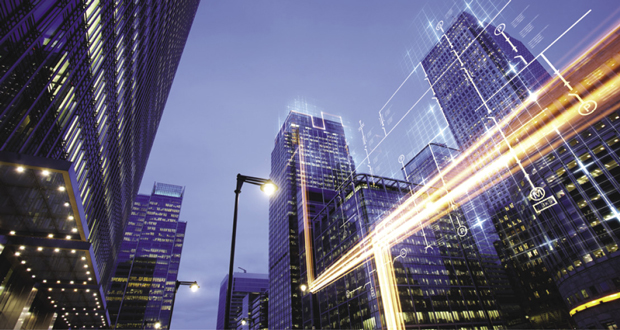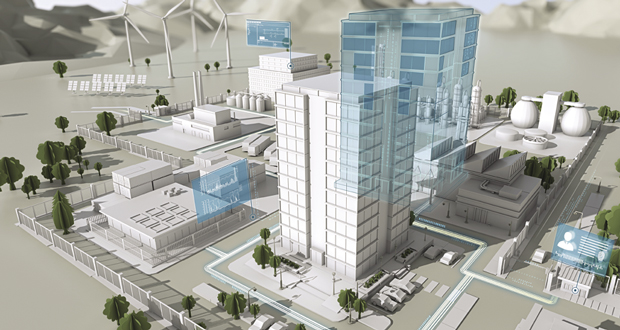CRIMINAL ACTIVITY AND CYBER SECURITY
According to the Federation of Small Businesses, business crime directly affects between a quarter and a third of UK businesses annually. Business crimes include anything from burglary and damage to property, to financial crimes like fraud, embezzlement and cyber crime. The 2018 Cyber Security Breaches Survey found 19 per cent of charities and 43 per cent of businesses had reported cyber security breaches or attacks in the preceding 12 months. The average financial impact each time was £3,100 for businesses and £1,030 for charities.
The technology: Buildings can protect against physical (rather than digital) crimes with increasingly sophisticated security systems. Improved pixelation can mean images are captured quicker, and 360 degree cameras mean that one camera can be used where several were once needed. If a security operator needs to follow someone’s movements, systems can prompt the user as to which camera will pick the subject up next. Such systems are becoming increasingly intuitive and therefore require less staff training – and less time and money to implement. Sophisticated access-control solutions allow dynamic remote control of all areas of a building, as well as user/visitor identification. An interoperable system of video surveillance, access control and intrusion detection help security personnel to view any area whenever a door is opened or an alarm is triggered. In order to protect effectively against cyber threats, physical and digital preventative measures need to be integrated. Physical weakness can potentially expose a building to cyber crime, and therefore the first step to prevent cyber attacks involves general physical security – including physical access to the facility, organisational measures such as security policies, and monitoring the facility for anomalies that could indicate a cyber attack. Secure products and solutions have been developed that can respond to a fast, complex, and ever-changing threat landscape. By adhering to the main pillars of prevention, detection, and reaction, products, solutions, and services are continually developed to prevent and respond to threats and attacks.
The benefits and potential savings of smart building technology are one thing, finding practical, affordable and sustainable ways of achieving smart-building conversion is another.
Pioneering landlords and owner-occupiers are therefore increasingly looking to solutions whereby the supplier of a “service” such as smart-building conversion deploys financial techniques that remove the need to devote own capital, bundling the conversion into a monthly fee across an agreed-upon contractual period. In other words these financing arrangements harness future energy savings in order to pay up front for the technology that enables such savings in the first place, as well as other smart building advantages. This is leading to the rise of a concept called “Smart Buildings as a Service,” sometimes called “servitisation.”
These are just a few examples of the many challenges faced by building owners that can be managed with smart building technology. Nevertheless, making the initial investment in such systems is itself a challenge. Luckily, smart finance solutions exist that make the investment sustainable and harness the savings made to make smart building technologies accessible.
To learn more ways that smart building technologies can impact your business see our report: www.siemens.co.uk/finance/costofnotinvesting






